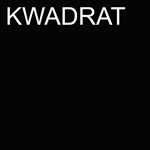Tobias Dostal
During his studies at Christoph Schlinensief, Dostal became interested in film, in particular the visual trickery and the visceral qualities of early cinema. Tobias's work skilfully combines elements of the magic and the cinematic to engage and immerse his audience with unusual methods. Tobias has established himself very quickly as a consummate artist with innovative ideas.
Blockbuster, (2014) must be walked through in order to see the filmstrips illuminated by LEDs. In Kinora (2012), the spectator sits and presses a button with their foot. This starts a motor, and beforethem unfolds a flip-book story: 480 photographs spinning around a table. These pictures create a narrative in a homage to early cinema, with stop-motion techniques pioneered by Méliès.
Voyage avec néné, (2014), another tribute to the film pioneer Georges Méliès (1861-1938) and his film Le Voyage Dans la Lune, (1902), consists of eighteen tripods, each with three projectors of individual images which project the images from various directions in different rhythms. Two Sphinx (2012) combines two projectors into one machine. Between them spins a feather fan, where two films of Dostal's sketches are projected and meld together to create one complete story. Satellit, (2014) hovers as an apparatus hung from the ceiling with its own projection screen. Appearing on the screen are sketched puzzle-pictures which reflect the abstract messages circulating through outer space, addressed to extra-terrestrial life-forms.
